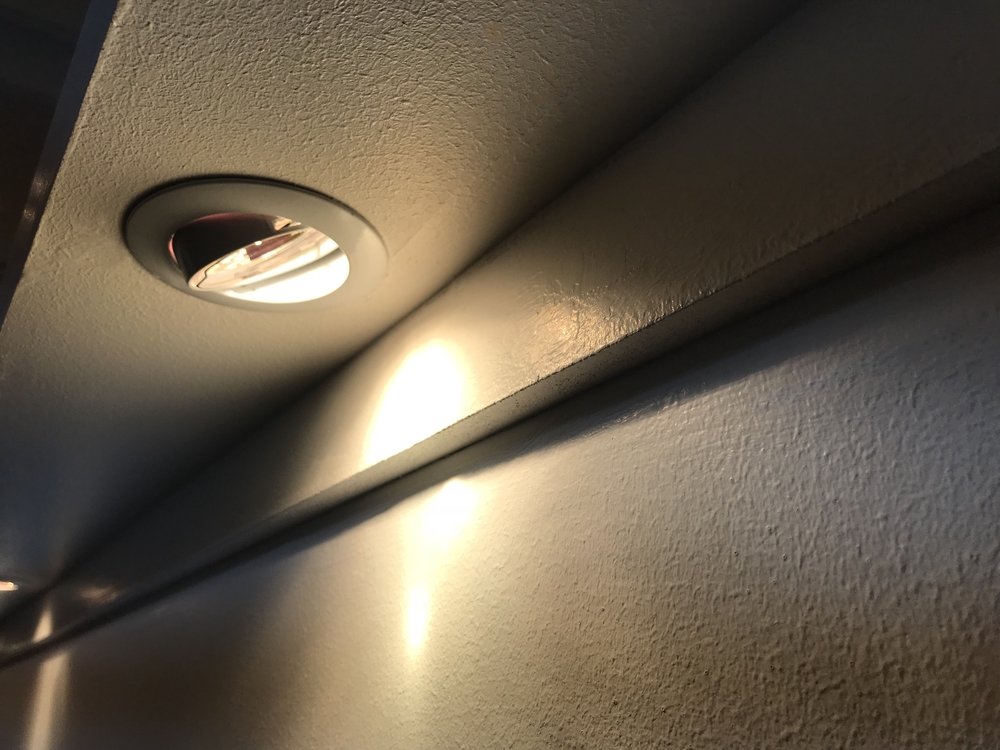When installing new lights in your home, especially downlights, it is important that you check the lights are safe for your home. Especially when downlights can and will come in contact with your home’s insulation. No one wants a disaster to strike in their home. This is why the IC Rating was developed, to keep you and your home safe. Today we are going to discuss what an IC Rating is and why it is so important.
What is an IC Rating?
The acronym IC stands for Insulation Contact. An IC rating, as a result, is essentially a measurement to determine if a downlight is suitable and safe to come in contact with insulation or not. A layer of insulation in the ceilings and walls protects most homes these days. This acts as a barrier to heat flow, helping ensure your home is cool in summer and warm in winter. If a downlight has an IC rating it has met the requirements set out by the New Australian Standard on Recessed Luminaries standard (AS/NZS standard).
The rating means that these products are suitable for use when covered by home and building insulation. The light fitting can come into close contact with insulation, which is not the case with most downlights.
You business or home has insulation in the roof and walls. Insulation is an excellent way to keep your property at a comfortable temperature. It also improves your energy efficiency and can decrease your heating and cooling costs.
Insulation, however, can be extremely flammable, so the installation of any lighting or electrical appliance near insulation can be a fire hazard. Ceiling downlights can reach incredibly hot temperatures in order to generate their light. And halogen downlights can reach temperatures of at least 300°c, which is obviously dangerous around flammable materials. You can, however, install LEDs closer to ceiling insulation as they are much cooler and are less likely, as a result, to combust and start a fire.

The Importance of IC-Rated Downlights
A downlight that has an IC rating can be safely abutted and directly covered with insulation. As a result, this makes the installation process easier. Your builder can lay insulation, unbroken, over the whole ceiling area. This also means the insulation in your home is better, without any gaps.
The benefits of IC rated downlights are:
- Less chance of a fire hazard
- Save on electrician’s costs due to time saved
- Simpler installation processes
- Unbroken insulation in the ceiling avoiding thermal loss

Downlights Without an IC Rating
Unlike an IC rated downlight, a downlight with no IC rating can’t come in direct contact or be covered by insulation. Your installer must clear insulation around and above the downlight to allow heat to properly dissipate. If the heat is trapped by insulation, it can pose a severe fire hazard. It can also cause a significant reduction in the life of the downlight, meaning it can fail prematurely and even discolour the ceiling.
However, if the space where the downlight will be installed doesn’t require or contain insulation, then downlights without an IC rating is fine. With no insulation present, the heat from the downlight will easily and harmlessly dissipate within the air cavity.
The main issues with non-IC rated downlights include:
- A more difficult installation process
- Installation is more time consuming as insulation needs to be removed above and around the downlight
- Higher electrician costs due to a more time-consuming installation process
- A higher risk of a fire/safety hazard
- May cause thermal loss due to compromised insulation

Why Choose an IC Rated Downlight?
We have already discussed the importance of an IC rated downlight, as it can be used in close proximity to insulation and help prevent a fire/safety hazard. It also prevents thermal loss, saving your heating and cooling costs. But what about the technical differences?
An IC rated downlight has a longer lifespan, beam angle, warranty, lumen output, and input power than a non-IC rated downlight. Upgrading from standard downlights to IC rated downlights, not only improves your aesthetics but makes your lighting system more efficient. This is due to the fact that you can remove the transformers your previous lighting system required. IC rated downlights do not require a transformer, which creates a more reliable system and also prevents any transformer failures.
And, in some circumstances, upgrading to IC rated LED downlights might be your only option if you are replacing halogen downlights. Most stores and electricians will not recommend or undertake replacing halogen lights with new halogen lights as they are simply not as safe as IC rated LED downlights. Martec always recommends upgrading your light fittings to IC rated downlights for safety and improving the quality of the lighting in your room and home.
Looking to improve, upgrade or install new lighting in your home? Explore the range of IC rated LED lights at Martec, today!